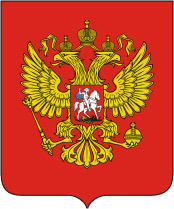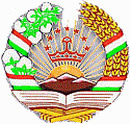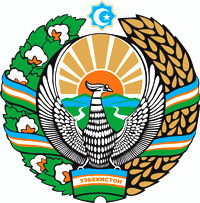Background
Factbook: SCO Member States
(sectsco.org)
Updated: 2010-06-09 15:20
 |
Large Medium Small |
Russia
With an area of 17,075,400 sq.km, RUSSIA (THE RUSSIAN FEDERATION, RF) is the largest country in the world. According to its constitution, Russia is a democratic federation. Its capital is Moscow and the monetary unit is Rouble.
The head of state is the President of the Russian Federation (currently D. A. Medvedev), and is elected every 6 years. The President is also the Supreme Commander-in-Chief of the Armed Forces of the Russian Federation.

The Russian national legislature is the Federal Assembly (the Parliament of the Russian Federation) made up of two houses: the Federation Council and the State Duma. The executive power is exercised by the Government of the Russian Federation.
Russia's main political parties include United Russia, Fair Russia, Communist Party of the Russian Federation, and Liberal Democratic Party of Russia. The official language is Russian.
Russia (the Russian Federation) consists of 89 equal-right subjects (regions), including 21 autonomous republics, six territories, 49 regions, 10 autonomous areas, one autonomous region and two cities with a federal status (Moscow and St. Petersburg). In 2003, the national power system was reformed to reinforce the central power, to this end seven federal districts headed by the President's political representatives were established.
Russia shares land borders with Norway and Finland in the northwest, with Poland, Estonia, Latvia, Lithuania, Byelorussia in the west, with Ukraine in the southwest, and with Georgia, Azerbaijan, Kazakhstan, China, Mongolia and the Democratic People's Republic of Korea in the south.
The Russian Federation ranks No. 1 worldwide in natural gas reserves, No. 1 explored iron ore reserves, No. 2 in production, and No. 3 in coal reserves. Russian forest resources are the largest worldwide.
On June 12, 1990 the First Congress of People's Deputies of the Russian Soviet Federative Socialist Republic (RSFSR) declared the state sovereignty of Russia.
Tajikistan
Tajikistan (The Republic of Tajikistan, RT) is a democratic republic in the southeast of Central Asia, with a population of 7 million and more than 80 ethnic groups, including Tajiks, Uzbeks, Russians, Tatars, and Kyrgyz. Its capital is Dushanbe. The monetary unit is Somoni. The official language is Tajik, while Russian is a language for inter-ethnic dialogue.

The head of state is the the President of Republic of Tadjikistan (currently Emomali Rahmon), who is elected every 7 years and cannot be re-elected after two successive terms. The President is also the Supreme Commander-in-Chief of the Armed Forces.
The national legislature of the Republic is Majlisi Oli (the Parliament). The executive power is exercised by the Government.
With an area of 143,100 sq km, Tajikistan shares borders with Uzbekistan, Kyrgyzstan, China and Afghanistan. The country has 3 provinces, 45 districts (including 8 districts of republican subordination), and 19 municipalities. The largest cities of the Republic are Dushanbe, Leninabad, Kurgan Tyube, Kulyab.
The country generates electricity mainly through hydroelectric power plants. The key industries include nonferrous metallurgy, light and food industries. Its agriculture fetures cotton growing, silk farming, fruit growing and grape growing.
In September 1991, Tajikistan adopted its official name - the Republic of Tajikistan.
Uzbekistan
Uzbekistan (the Republic of Uzbekistan, RUz) is a country in Central Asia, with a population of more than 26.5 million and more than 100 nationalities, including Uzbeks, Russian, Tajiks, Kazakhs, Tatars and Karakalpaks. The capital is Tashkent. The monetary unit is Sum. Its official language is Uzbek while Russian is a language for inter-ethnic dialogue.

The head of state is the President of the Republic of Uzbekistan (currently I. A. Karimov), elected every 7 years. The national legislature, the parliament of the Republic of Uzbekistan, exercises legislative power, which consists of two chambers - the Oliy Majlis(the lower house) and the Senate (the upper house).
With an area of 447,400 sq km, Uzbekistan shares borders with Kazakhstan, Turkmenistan, Tajikistan, Kyrgyzstan and Afghanistan. It has a coastline of the Aral Sea in the northwest.
The Republic of Uzbekistan consists of the Karakalpak Autonomous Republic and twelve other provinces.
Uzbekistan is rich in mineral resources, with approximately 100 types of mineral resources in its territory. The Republic is the world's eighth largest producer of gold. It is also one of the largest gas producers in the world. Other notable mineral resources include coal, uranium ore, nonferrous and rare-earth metals (silver, copper, lead, zinc, tungsten and molybdenum).
Uzbekistan is mainly an agricultural country, with cotton processing as the mainstay. The country's industry include metallurgy, motor industry, chemical industry, food-processing industry and manufacturing of construction materials.
The Republic of Uzbekistan declared its independence on September 1, 1991.